Author: Michelin
Cast: Wang Xuan, Editing: Yin Rui
Several new electric cars recently launched by domestic automakers have undergone a drastic transformation in terms of styling design and are taking an unconventional approach. Among them, the WmAuto M7 is definitely among the top three.
Last month, WmAuto launched the new model M7, featuring a dual-tone design on the front hood, a unicorn version of the top-mounted LIDAR, and a split rear light…whether or not one appreciates this design is a matter of personal preference, but it certainly boasts a highly recognizable design.
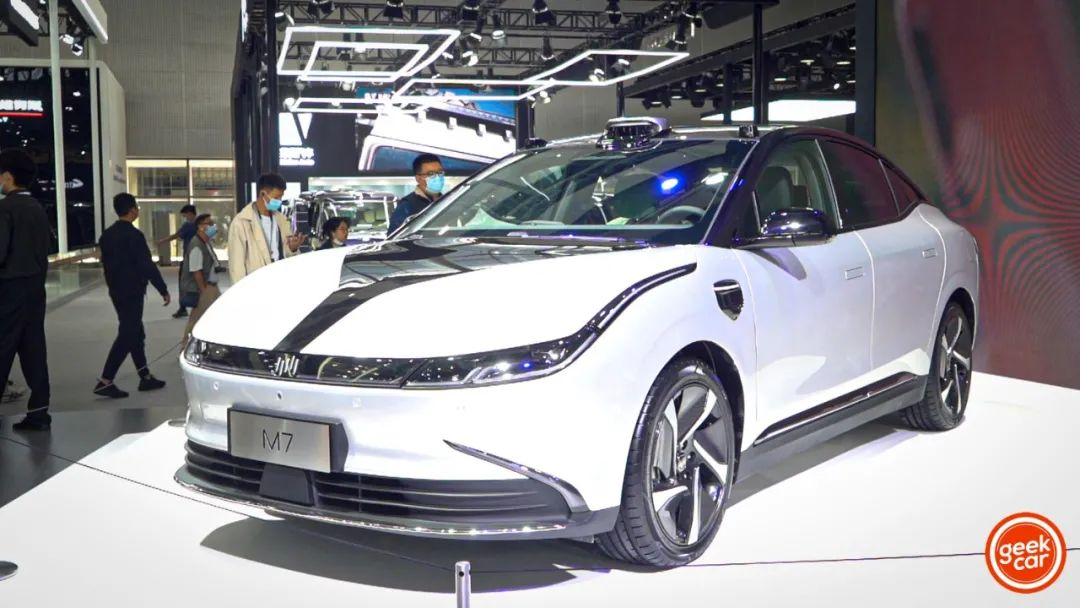
As a result, as soon as the Guangzhou Motor Show opened, we headed straight for the WmAuto booth to catch a glimpse of the true face of the M7.
Tech Skin + Wearable Device, the Cabin Has Everything You Need
Compared to the highly recognizable appearance that is captivating at first glance, we’re more interested in seeing what’s inside the car’s cabin.
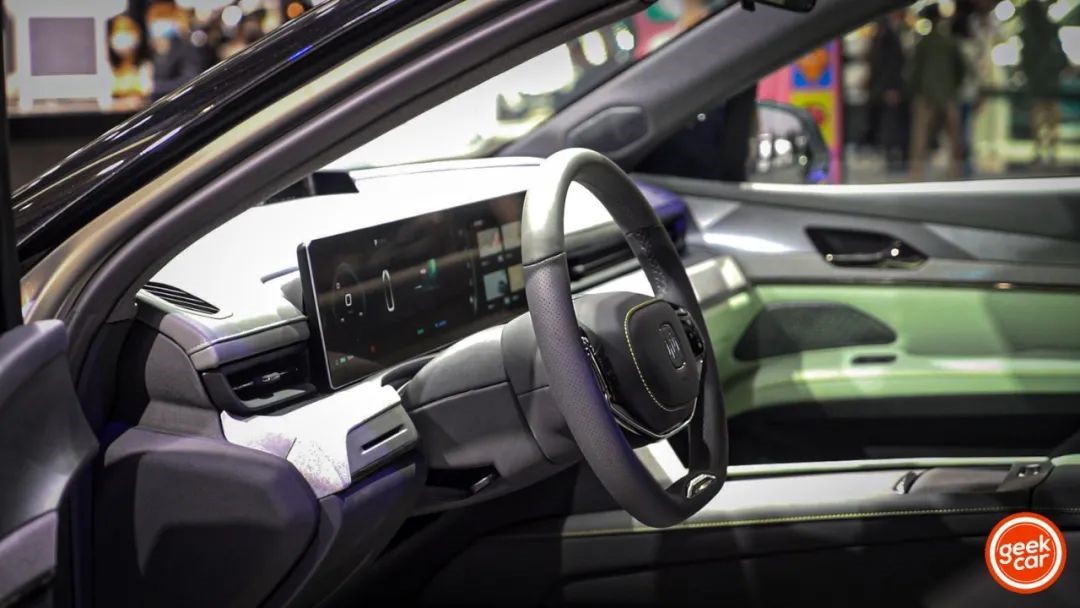
Without electricity connected, the interior of the WmAuto M7 looks ordinary, featuring a design with no physical buttons, a dual screen design for both the central control and the instrument panel. The only distinctive feature is a circle of fabric-like material decoration on the front of the passenger side and on the inside of the car door. This circle of “fabric decoration” is the M7’s i-Surf tech skin.
i-Surf uses a dot matrix screen design that creates an ambient lighting effect and interacts with users when they issue voice commands or adjust cabin modes. It can also collaborate with the ADAS system to provide collision alerts in advance.
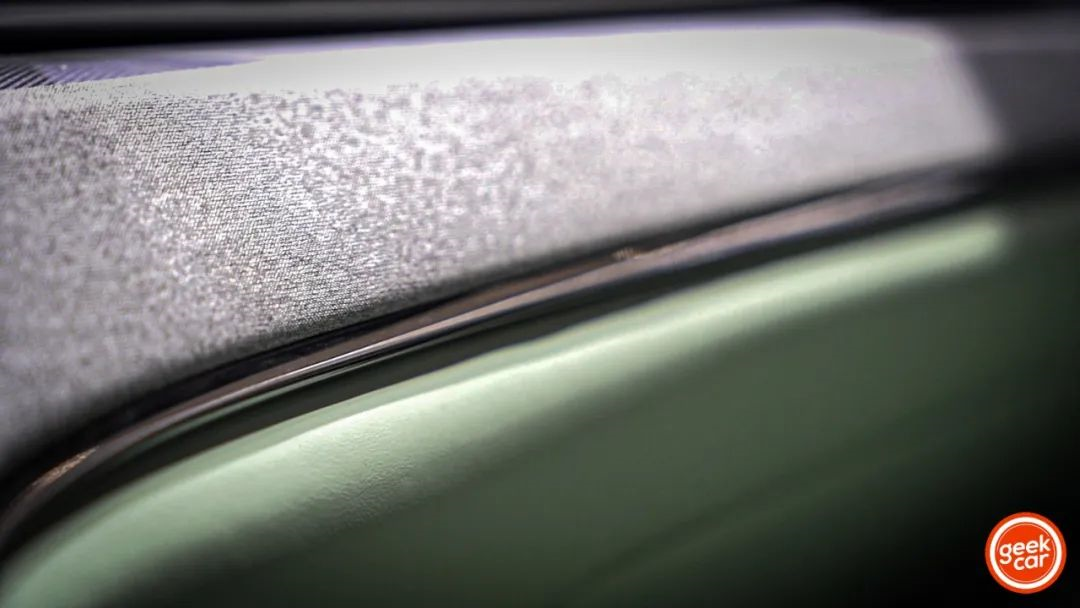
This reminds me of the Mercedes-Benz S-Class we recently reviewed at the “Intelligent Cabin Intelligence Bureau,” which interacted with users through the indoor ambient lighting color changes and rhythm when issuing voice commands. This can be said to have some similarities with the M7’s i-Surf tech skin.Another highlight in the cabin besides the i-Surf technology skin is the i-Rota super knob. Positioned as an “intelligent wearable device”, this 1.58-inch mini circular screen on the right side of the main driver’s seat is arranged by WM Motor for three “functions” – control, display, and interaction. It looks like a smartwatch, but functionality-wise, I think it’s more like a BMW iDrive knob and NIO NOMI integration.
The i-Rota can display limited information such as air-conditioning temperature, and although it might seem like a bit of a gimmick to display information on such a small screen, its other two functions are much more useful. One is that it can display dynamic expressions, symbols, and images on the knob, similar to NIO’s nomi. When a user gives a command or listens to music in the car, the i-Rota can interact with the user, becoming a tangible interactive outlet for the WM M7’s intelligent system.
The other function is the control function, which allows the air-conditioning temperature and wind speed, as well as music volume and other features, to be adjusted by rotating and touching the i-Rota knob. Of course, these functions can also be adjusted on the central control screen, but just as iDrive 8 chose to retain the classic iDrive knob, the precise control of the knob and its familiarity to older drivers may be difficult to replace with a touchscreen.
Apart from these two highlights, I was also curious about the black strip on the back of the central control screen which was not introduced by the official. Who knows what its function is?
As for the experience of the cockpit system’s fluency and the intelligence of the voice, we’ll have to wait for M7 to open for test drives before GeekCar can give feedback.
In the launch event, WM Motor claimed that “M7 has L5-level hardware configuration for unmanned driving,” especially in terms of perception hardware. Additionally, the i-Surf dot-matrix screen can display regular information such as time, weather, and temperature, and can also present welcoming messages, door-opening reminders, and user-customized images based on scene settings. You might wonder why not just put an entertainment screen on the copilot’s side instead? After all, a dot matrix screen can’t brush Douyin and watch videos like an LCD screen, and the displays and information on those two screens are not in the same league. However, by using this fabric-like dot-matrix screen to create an atmosphere, it reduces the hardware sensation of the large screen and adds a bit of “warmth” to the cabin, which is quite interesting.From the overall perception plan, the WmAuto M7 is equipped with 32 sensor hardware, including:
- 3 autonomous zooming high-precision solid-state lidars
- 5 millimeter-wave radars
- 12 ultrasonic radars
- 7 8-megapixel HD cameras
- 4 2-megapixel panorama cameras
- And 1 independent high-precision positioning module.
360-degree perception fusion through multiple sensors to provide safety redundancy.
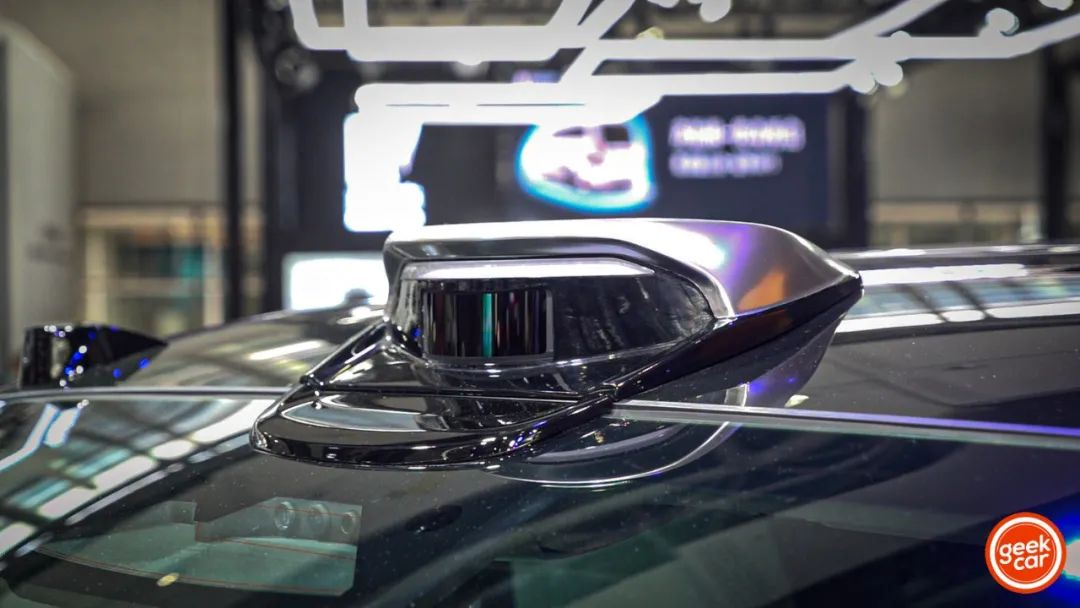
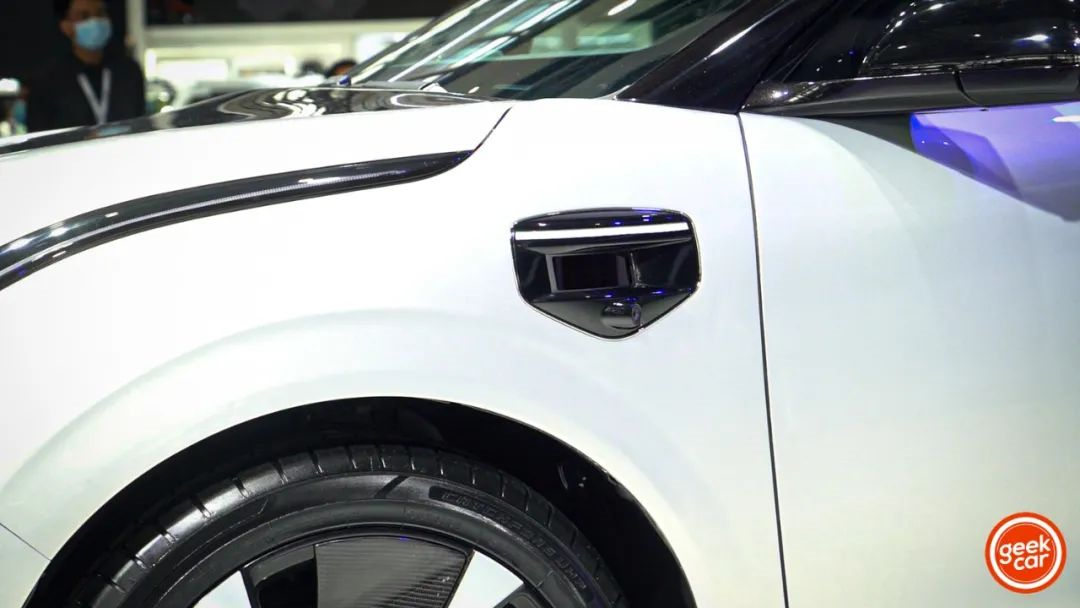
Unlike its counterparts in the industry that make lidars smaller and more invisible, WmAuto’s main lidar is quite eye-catching. Similarly, both WmAuto M7 and XPeng G9 chose the MEMS lidar M1 provided by VensonTech. While XPeng G9 installed it under the front headlights on both sides, WmAuto M7 installed it in the front center and both sides of the vehicle roof.
The main lidar seen on site is slightly different from the one shown at the press conference. The black top-mounted lidar shown at the press conference has an additional silver shell at the auto show, making it more eye-catching instead of weakening this “smart corner.”
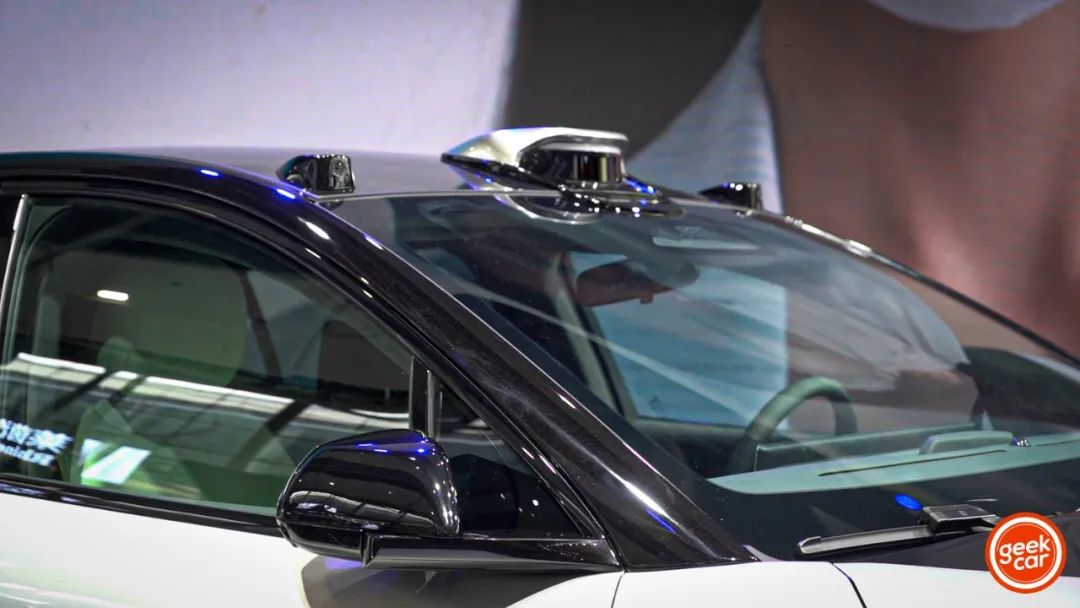
To match the “top” perception hardware, WmAuto M7 is equipped with NVIDIA DRIVE Orin-X autonomous driving chip, which has a single-chip computing power of 254 TOPS and a single-chip power consumption of about 40 W. It has a built-in NVIDIA GPU and 12-core ARM CPU, and adopts 7nm process technology. It can be equipped with up to 4 Orin-X chips, and the maximum computing power of 4 Orin-X chips can reach 1,016 TOPS, but the system power consumption will also increase significantly.
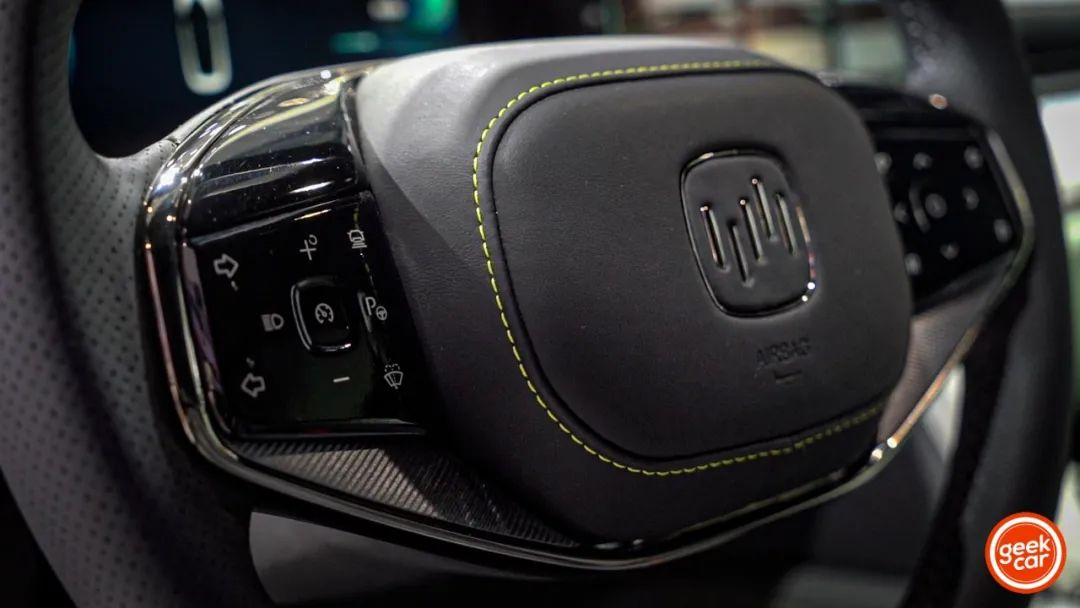
According to the information provided by WmAuto M7, the autonomous driving system will actively enhance environmental perception capabilities on urban roads and intercity highways.
With such powerful computing power and perception hardware, how will it perform specifically?
Conclusion
The improvement of the penetration rate of new energy vehicles, the gradual maturity of traditional automakers’ electrification transformation, and the increasingly complete product lines of new car-building companies have all made the competition in the electric vehicle market gradually enter the white-hot stage.The early delivery of vehicles among the new forces in the automotive industry, WM Motor needs a strong “tonic” to boost its momentum and sales.
This article is a translation by ChatGPT of a Chinese report from 42HOW. If you have any questions about it, please email bd@42how.com.